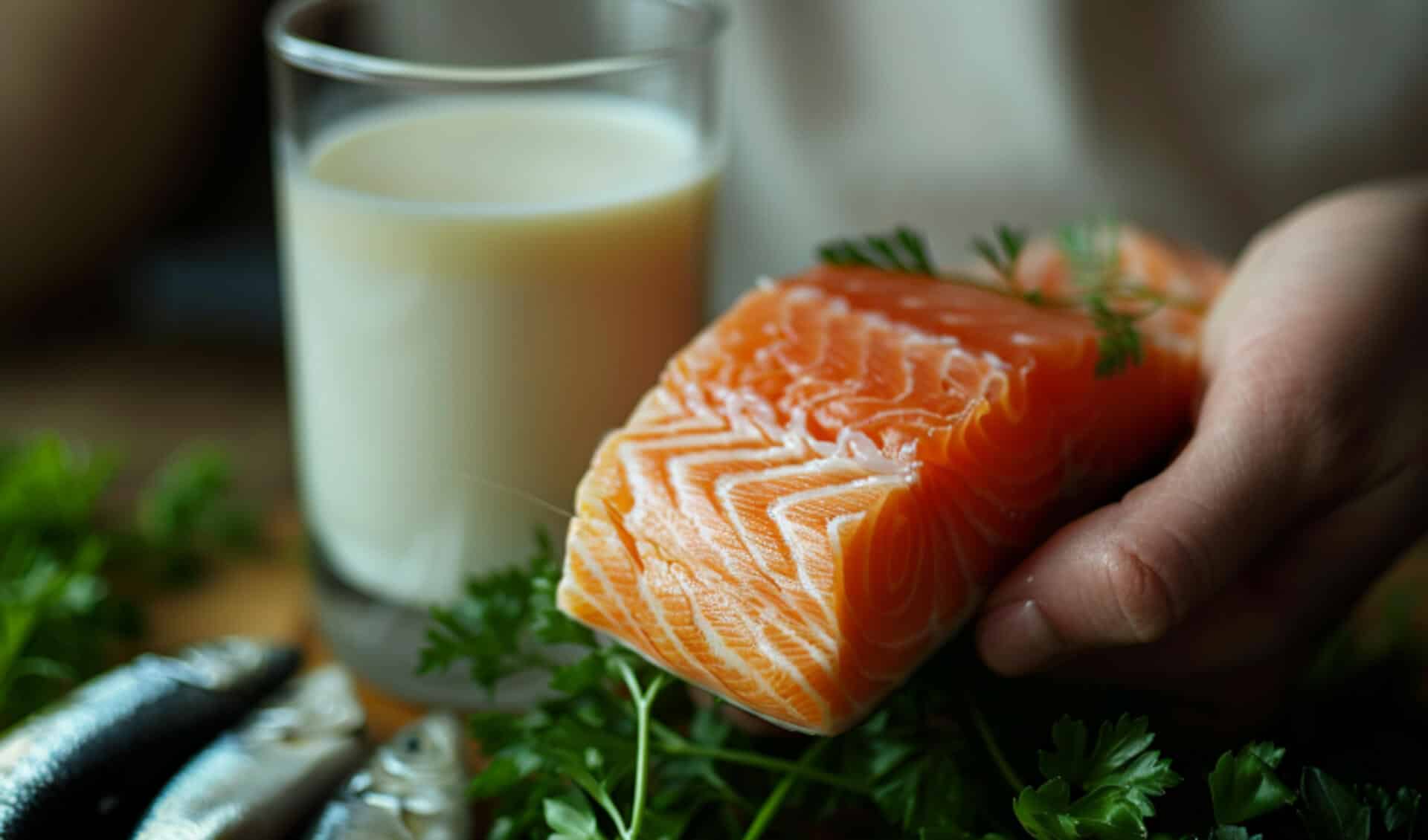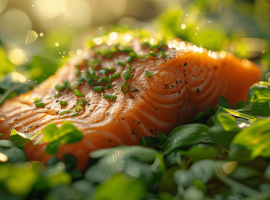Calcium-Rich Fish Varieties: A Nutritional Guide
When seeking dietary sources of calcium, certain fish species stand out for their significant calcium content. Sardines, salmon, and cod are particularly noteworthy, with sardines offering an impressive 382 mg of calcium per 100g serving when canned with bones. Salmon, especially when consumed with bones, provides a substantial calcium boost as well.
Comparing Calcium Levels in Sardines and Salmon
Sardines and salmon are both excellent sources of calcium. Sardines, often consumed with their bones, provide a concentrated dose of this essential mineral. Salmon, particularly canned varieties with bones, also contributes to calcium intake, though to a lesser extent than sardines.
Lesser-Known Calcium-Rich Fish
Beyond the well-known sardines and salmon, other fish like rainbow trout and Atlantic mackerel also offer notable calcium content. These species, while not as commonly cited for their calcium, can be valuable additions to a calcium-rich diet.
Contribution to Daily Dietary Requirements
Incorporating fish into one’s diet can significantly contribute to meeting daily calcium requirements. For instance, a single serving of canned sardines can fulfil nearly 40% of an adult’s recommended daily intake. Regular consumption of calcium-rich fish, alongside other dietary sources, ensures adequate calcium levels for maintaining bone health and supporting vital bodily functions.
The Essential Nature of Calcium in Human Health
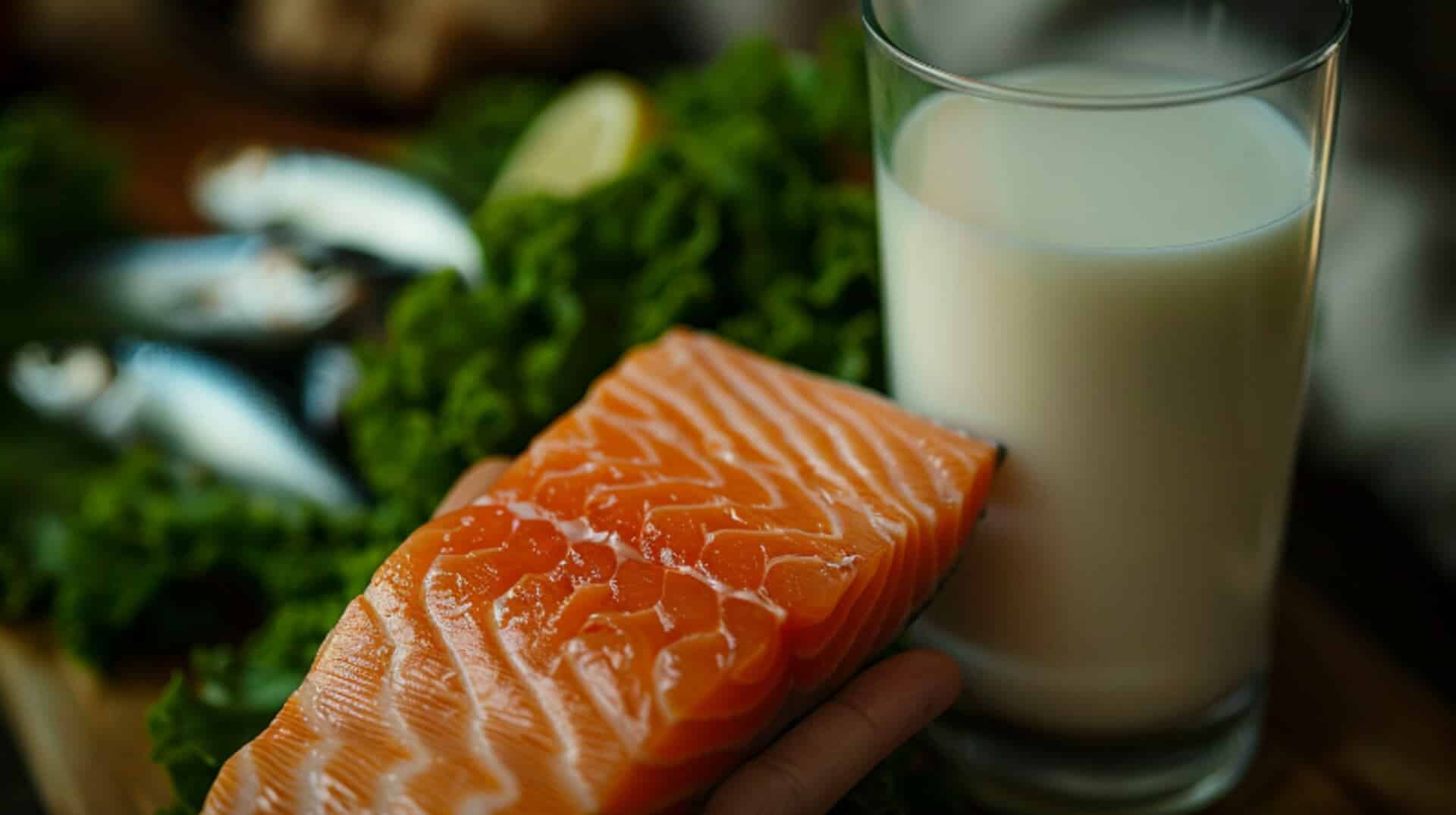
Calcium’s role in the body extends beyond the well-known function of maintaining skeletal structure. It is indispensable for health and well-being due to its involvement in various physiological processes. As the most abundant mineral in the human body, calcium is vital for nerve transmission, muscle contraction, and vascular function. It also plays a crucial role in intracellular signalling, hormone secretion, and blood clotting.
Primary Functions of Calcium
Calcium’s primary functions are multifaceted:
- Skeletal Integrity: It provides structural support, maintaining bone density and strength.
- Muscular Function: Calcium ions facilitate muscle contraction, enabling movement.
- Cardiovascular System: It aids in maintaining normal heart rhythm and blood pressure.
- Nerve Transmission: Calcium is essential for neurotransmitter release in the nervous system.
Impact of Calcium Intake on Bone Density and Muscle Function
Adequate calcium intake is directly linked to the prevention of osteoporosis and the maintenance of muscle function. It helps mitigate the loss of bone density that can occur with age and supports the proper functioning of muscles, including the heart.
Absorption and Utilisation of Calcium from Fish
Calcium from fish, particularly from those consumed with bones such as sardines and salmon, is readily absorbed and utilised by the body. The presence of vitamin D in oily fish enhances calcium absorption, making these species an excellent source of both nutrients. When you include calcium-rich fish in your diet, you’re not only supporting bone health but also ensuring the proper functioning of critical bodily systems.
Synergistic Effects of Vitamin D and Calcium in Fish

Vitamin D plays a pivotal role in the body’s ability to absorb calcium, acting as a facilitator for this critical mineral. Without sufficient vitamin D, the body cannot form the hormone calcitriol, which is necessary for calcium absorption in the intestines.
Fish Varieties Rich in Calcium and Vitamin D
Certain fish are naturally endowed with both calcium and vitamin D, making them an ideal dietary choice for maximising nutrient intake. Oily fish such as salmon, mackerel, and sardines are not only high in calcium, especially when their bones are consumed, but also in vitamin D.
Benefits of Combined Nutrient Intake
Obtaining calcium and vitamin D from a single food source like fish ensures a harmonious balance of these nutrients, which is beneficial for bone health and metabolic processes. This natural combination also aids in the prevention of diseases such as rickets in children and osteomalacia in adults.
Ensuring Adequate Vitamin D for Calcium Absorption
To ensure sufficient vitamin D intake to support calcium absorption, consumers should include a variety of oily fish in their diet. Exposure to sunlight and, if necessary, vitamin D supplements can also help maintain adequate levels of this nutrient, particularly in regions with limited sunlight.
Advantages of Calcium from Fish

When considering calcium intake, fish emerges as a superior source compared to supplements. Whole fish provide a matrix of nutrients, including omega-3 fatty acids, protein, and vitamins D and B2, which work synergistically to enhance overall health. The bioavailability of calcium from fish, particularly those consumed with bones like sardines, is high, meaning the body can absorb and utilise this mineral efficiently.
Whole Fish Versus Fish Oil Supplements
Whole fish consumption offers a broader spectrum of health benefits beyond calcium. The presence of other nutrients in fish aids in the prevention of chronic diseases and supports cognitive and cardiovascular health. Fish oil supplements, while beneficial, may not provide the same level of comprehensive nutrition due to the absence of these accompanying nutrients.
Circumstances Necessitating Supplements
Supplements may be necessary for individuals with specific dietary restrictions, allergies, or conditions that limit their ability to consume whole fish. In such cases, high-quality fish oil supplements can be a viable alternative to ensure adequate omega-3 fatty acid intake.
Choosing Between Fish and Calcium Supplements
When selecting between fish and calcium supplements, consumers should consider factors such as dietary preferences, potential allergies, and environmental sustainability. For those able to consume fish, it remains the recommended option for a nutrient-rich diet. However, when choosing supplements, look for products with certifications that guarantee purity and environmental responsibility.
Mitigating Mercury Exposure in Fish Consumption

When incorporating fish into your diet for its calcium benefits, it’s essential to consider mercury content. Mercury is a heavy metal that can accumulate in fish, particularly in larger predatory species. To minimise exposure, consumers should opt for fish known to have lower mercury levels.
Selecting Low-Mercury, Calcium-Rich Fish
Fish such as sardines, salmon, and trout are not only abundant in calcium but also typically have lower mercury concentrations. These species are smaller and have shorter lifespans, which limits their mercury accumulation.
Recommended Serving Sizes and Consumption Frequency
For safe fish consumption, it is recommended that adults eat no more than two to three servings of low-mercury fish per week. Pregnant women and young children should consult health advisories for specific serving size recommendations to reduce potential mercury exposure.
Cooking Methods and Mercury Content
Cooking methods do not significantly affect the mercury content of fish. Since mercury is bound to the proteins in fish muscle, it remains intact regardless of how the fish is prepared. Therefore, the focus should be on selecting the right fish species and adhering to recommended serving sizes for optimal health benefits.
Preparing Calcium-Rich Fish for Optimal Intake

Incorporating fish into your diet is a flavorful way to enhance calcium intake. Simple preparation methods such as grilling, baking, or steaming can preserve the nutritional content of fish. For example, grilling sardines and serving them with a squeeze of lemon not only adds zest but also aids in calcium absorption.
Creative Ways to Serve Calcium-Enriched Fish
- Sardine Spread: Mash canned sardines with avocado for a nutrient-dense spread on whole-grain toast.
- Salmon Stir-fry: Toss chunks of salmon into a stir-fry with vegetables for a quick, calcium-rich meal.
- Fish Tacos: Use grilled or baked fish in tacos with a cabbage slaw for a family-friendly dish.
Adapting Fish Dishes for Dietary Restrictions
For those with dietary restrictions, there are still ample opportunities to benefit from the calcium in fish:
- Gluten-Free: Opt for grilled fish seasoned with herbs and served with a side of roasted vegetables.
- Dairy-Free: Create a dairy-free fish pie using almond milk as a base for the sauce.
- Vegetarian Options: Incorporate fish into a vegetarian diet by pairing it with plant-based sides like quinoa or lentils.
By choosing the right fish and employing health-conscious cooking methods, you can enjoy delicious meals that contribute significantly to your daily calcium needs.
Maximising Calcium Retention Through Cooking Methods

When preparing calcium-rich fish, certain cooking methods can affect the retention of this vital mineral. To ensure maximum calcium content, gentle cooking techniques are recommended.
Cooking Techniques That Preserve Calcium
- Steaming: This method preserves the integrity of the fish and its nutrient content, including calcium.
- Baking: Cooking fish in an oven at moderate temperatures helps retain calcium and other nutrients.
- Poaching: Submerging fish in a simmering liquid can preserve both the calcium content and the fish’s delicate texture.
Preparatory Practices for Nutritional Preservation
The way fish is handled before cooking can also impact its nutritional value. It is important to:
- Avoid Over-Cleaning: Scraping off scales excessively or removing small bones can lead to a loss of calcium.
- Minimal Processing: Keeping the fish in larger pieces rather than filleting can help maintain calcium content.
Cooking Techniques to Avoid
- High-Heat Grilling: While it can impart a desirable flavour, grilling at high temperatures may degrade some nutrients.
- Deep-Frying: This method can increase the fat content without any added benefit to calcium retention.
Enhancing Calcium Absorption from Fish
Incorporating ingredients high in vitamin C, such as tomatoes or citrus fruits, can enhance the body’s absorption of calcium from fish dishes. Additionally, serving fish with a side of leafy greens can provide complementary nutrients that promote calcium uptake.
Sustainable Seafood: Ensuring Ethical Calcium Sources

When selecting calcium-rich fish, it’s imperative for consumers to consider the sustainability of their choices. Sustainable fishing practices are crucial for the health of marine ecosystems and the long-term availability of seafood.
Identifying Sustainable Seafood
To make sustainable choices, look for certifications such as the Marine Stewardship Council (MSC) or Aquaculture Stewardship Council (ASC) labels. These indicate that the seafood has been sourced following stringent environmental standards.
Environmental Impacts of Fishing Practices
Different fishing methods have varying impacts on the environment. Overfishing, bycatch, and habitat destruction are significant concerns. Choosing fish from sources that use eco-friendly methods, such as pole-and-line fishing, can help mitigate these issues.
Contribution to Global Conservation
Opting for sustainably caught fish supports conservation efforts by promoting responsible fishery management. This ensures that fish populations and their habitats remain healthy for future generations.
Certifications and Labels for Ethical Sourcing
In addition to MSC and ASC, look for the “Best Aquaculture Practices” (BAP) certification. These labels help guide consumers toward making choices that are better for the environment and for the communities that depend on fishing for their livelihoods.
Regional Fish Consumption and Calcium Intake

Cultural and regional preferences significantly influence dietary patterns, including the consumption of calcium-rich fish. Traditional diets around the world offer insights into how different populations utilise seafood as a calcium source.
Cultural Influences on Fish-Based Calcium Sources
- In regions where fish is a staple, such as in Japan or Mediterranean countries, the population often benefits from higher calcium intake due to the consumption of small, bone-in fish like sardines and anchovies.
- Native American tribes in Washington State hold salmon in high regard, not only for its cultural significance but also for its nutritional value, including calcium.
Learning from Global Fish Consumption Patterns
- Dietary surveys reveal that fish consumption varies widely between countries. For instance, Korean diets are typically higher in fish and shellfish compared to American diets, potentially contributing to different calcium intake levels.
- Epidemiological studies suggest that these variations in fish consumption may influence bone health and the prevalence of conditions like osteoporosis.
Traditional Diets and Calcium Intake
- Traditional diets that include daily servings of fish can provide sufficient calcium, often surpassing the intake from dairy sources prevalent in Western diets.
- The bioavailability of calcium from fish is generally high, especially when fish are consumed with their bones.
Global Health Implications
- Understanding these dietary patterns can inform public health strategies aimed at improving calcium intake through nutrition education and the promotion of sustainable fish consumption.
- It also underscores the importance of preserving traditional dietary practices that contribute to better health outcomes.
Recognising and Addressing Calcium Deficiency
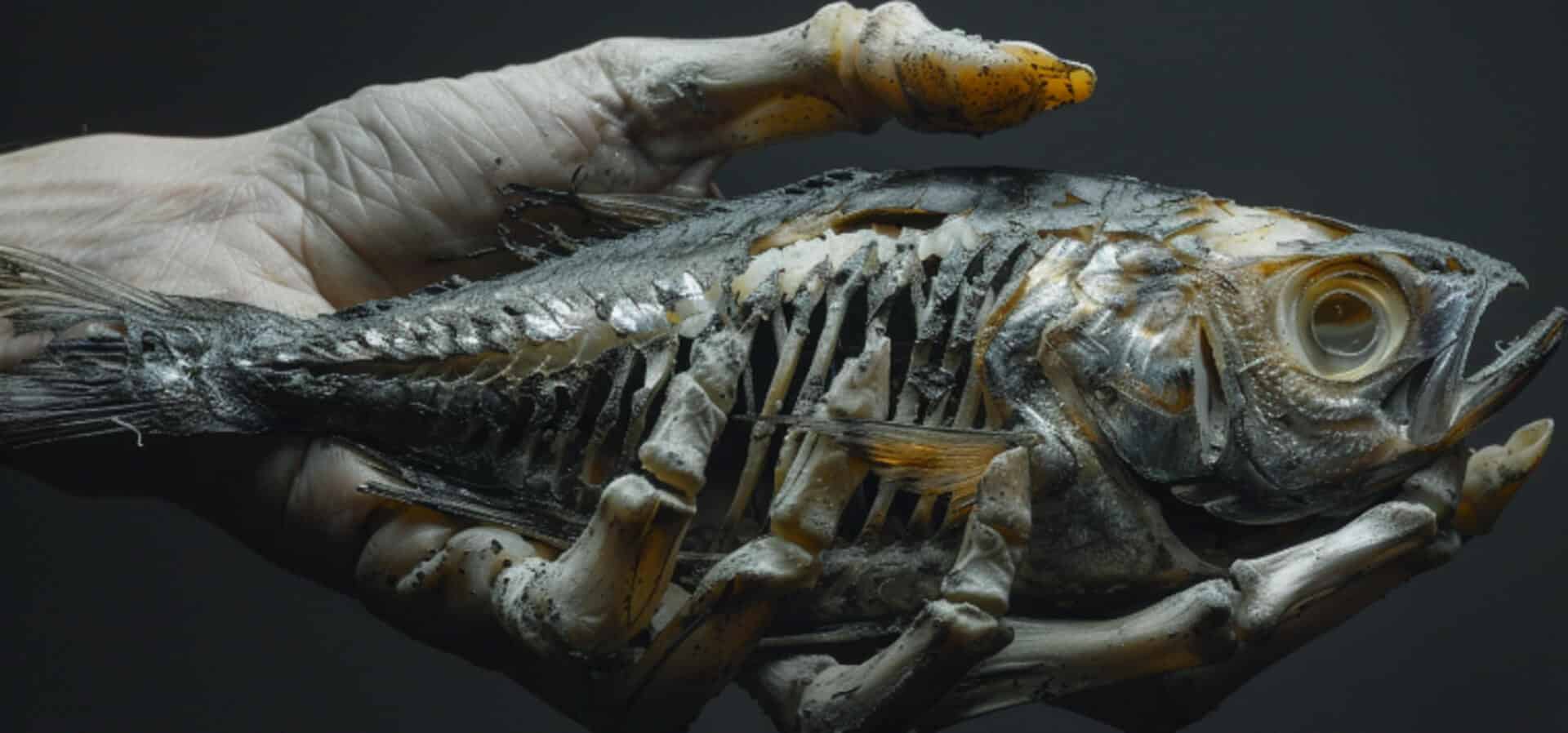
Calcium deficiency, or hypocalcemia, manifests through symptoms such as muscle cramps, fatigue, and abnormal heart rhythms. Regular consumption of calcium-rich fish like sardines, salmon, and cod can help mitigate these symptoms by contributing to the recommended daily intake of calcium.
Impact of Calcium-Rich Fish on Nutrient Intake
Incorporating fish into one’s diet not only addresses calcium needs but also enhances overall nutrient intake. Fish provide a host of other essential nutrients, including omega-3 fatty acids, which support cardiovascular health, and vitamin D, crucial for calcium absorption and bone health.
Complementary Nutrients in a Balanced Diet
While calcium is vital, it works best synergistically with other nutrients:
- Vitamin D: Found in oily fish, it is essential for calcium absorption.
- Phosphorus: Present in fish, it works with calcium to build strong bones and teeth.
- Magnesium: Also found in fish, it helps regulate calcium transport and is important for muscle function.
Tailoring Fish Consumption for Nutritional Needs
To meet specific dietary requirements, individuals should:
- Vary Fish Choices: Include different types of fish to cover a range of nutrients.
- Consider Life Stage: Adjust fish intake based on age, pregnancy, or lactation, where calcium needs may be higher.
- Balance with Other Foods: Combine fish with fruits, vegetables, and whole grains to create a well-rounded diet.
Bioavailability of Calcium in Fish

The bioavailability of calcium from fish is influenced by various factors, including the presence of bones and the specific fish species. Fish that are commonly eaten with their bones, such as sardines and salmon, provide a more readily absorbable form of calcium compared to boneless fish.
Factors Affecting Calcium Absorption from Fish
- Fish Species: Certain species have higher calcium content, particularly small, oily fish.
- Bone Consumption: Eating fish with bones, such as canned sardines, increases calcium intake.
- Vitamin D Presence: Vitamin D in fish enhances calcium absorption in the gut.
Comparative Absorption: Fish Versus Other Calcium Sources
Calcium from fish is processed differently by the body compared to dairy or supplements. The natural presence of vitamin D in fish aids in the absorption of calcium, making it a highly efficient source of this mineral.
Insights from Recent Studies on Calcium Absorption
Recent scientific research has provided insights into the absorption rates of calcium from seafood:
- Epidemiological Studies: These have shown a positive correlation between fish consumption and bone health.
- Nutritional Research: Studies suggest that the calcium in fish may be more bioavailable than that in dairy products.
Age and Health Conditions: Impact on Calcium Absorption
The body’s ability to absorb calcium from fish can vary with age and health conditions:
- Age-Related Changes: Older adults may experience reduced calcium absorption efficiency.
- Health Conditions: Certain conditions, such as osteoporosis, can affect how calcium is metabolised.
By understanding these factors, individuals can make informed decisions about their dietary calcium sources to support their bone health and overall well-being.
Key Strategies for Maximising Calcium Intake from Seafood
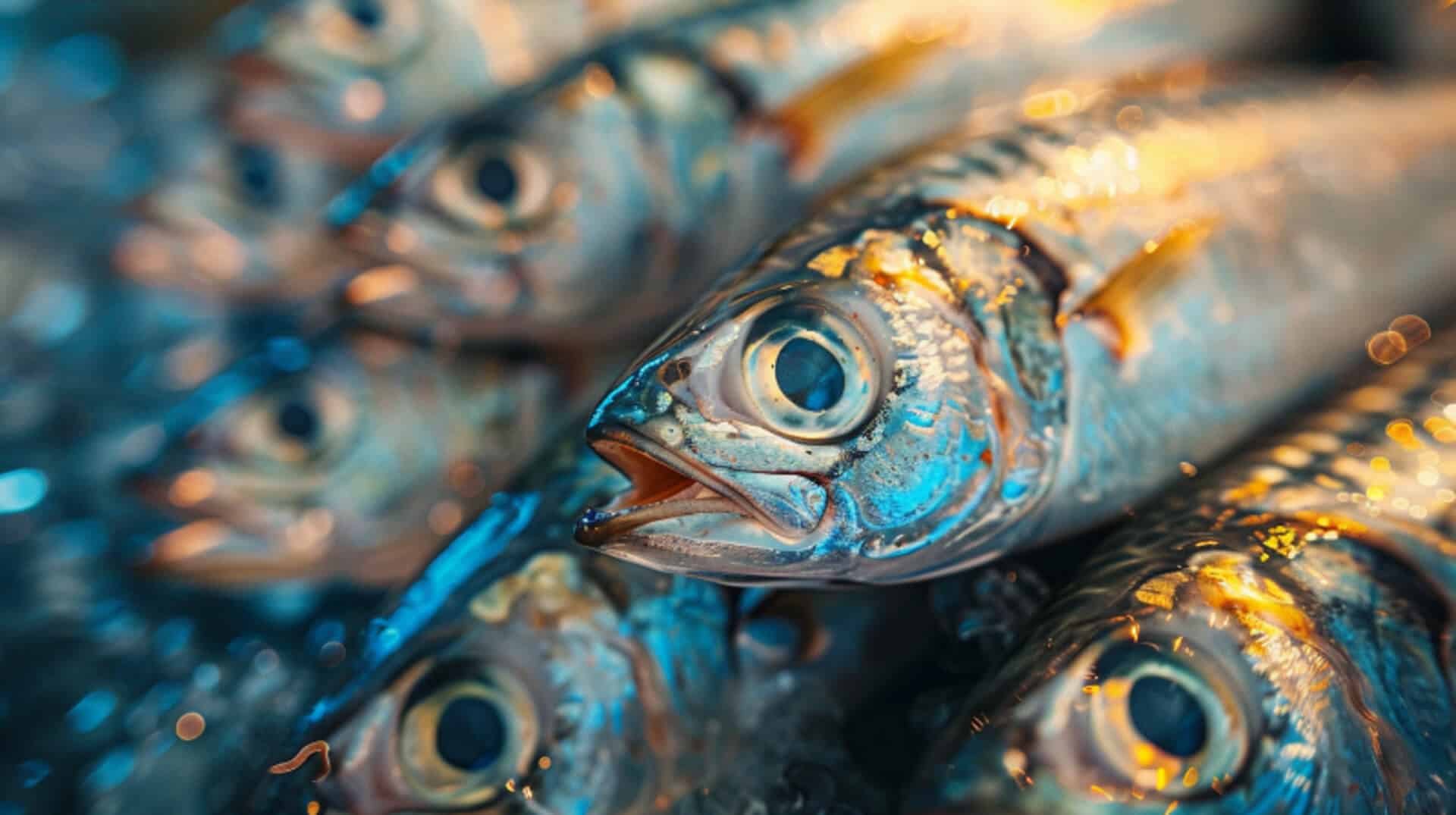
To optimise calcium intake from seafood, it is essential to focus on fish known for their high calcium content. Sardines, salmon, and anchovies, especially when consumed with their bones, are excellent choices. Here are some strategies to enhance calcium absorption from seafood:
- Diversify Seafood Selection: Regularly include a variety of calcium-rich fish in your diet to benefit from different nutrient profiles.
- Incorporate Whole Fish: Whenever possible, choose whole fish, which can provide more calcium than filleted options.
Informed Choices for Seafood in Diets
Making informed choices about seafood involves understanding the nutritional value of different fish species and their preparation methods. Consider the following:
- Review Nutritional Information: Look for detailed nutritional profiles when selecting seafood to ensure high calcium content.
- Balance with Other Nutrients: Ensure your diet includes other foods that aid in calcium absorption, such as those rich in vitamin D and magnesium.
Ensuring a Balanced and Calcium-Rich Diet
A balanced diet that includes calcium-rich seafood should also be diverse, incorporating a range of other nutrient-dense foods:
- Combine with Vegetables: Eat fish with vegetables high in vitamin K and magnesium to support bone health.
- Include Dairy or Alternatives: For additional calcium, include dairy products or fortified plant-based alternatives in your meals.
Role of “Frozen Fish Direct” in Providing Quality Seafood
Frozen Fish Direct” can be instrumental in providing access to high-quality, calcium-rich seafood options. They offer:
- Wide Selection: A variety of frozen fish that are rich in calcium, allowing for convenient and diverse meal planning.
- Quality Assurance: Assurance of sustainably sourced and properly handled seafood, ensuring maximum nutrient retention.
